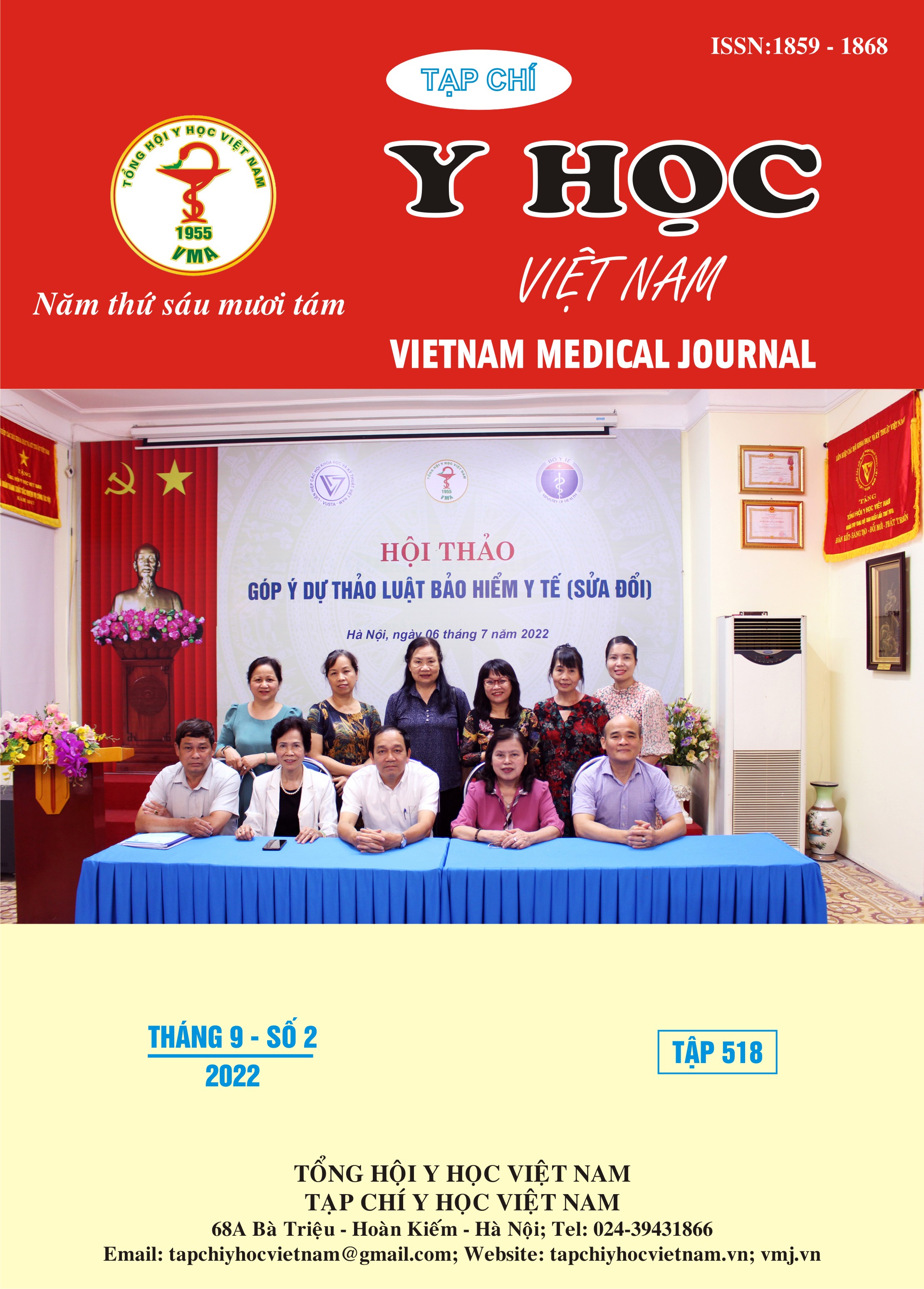CHARACTERISTICS OF PATIENTS WITH COMPLICATED URINARY TRACT INFECTIONS AT BACH MAI HOSPITAL
Main Article Content
Abstract
Aim: Description of clinical, laboratory and bacteriological characteristics of patients with complicated urinary tract infections (UTIs). Subjects and methods: Cross – sectional description of 155 patients diagnosed with complicated UTI at Bach Mai Hospital from August 2020 to June 2022. Result: The mean age of patients was 50 ±17,9 with 38,7% of patients from 20 to 45 years old, female 62,5%. 72,3% of patients with dysuria, 48,4% with flank pain and 43% of patients presented with fever. Most common risk facctors is kidney and urinary tract stones 38,1% and urological interventions about 80%. Urine culture:78% were postive for Gram – negative bacteria of which E.coli accounted for51,6%. E.coli is highly sensitive to fosfomycin (92,3%), meropemem (>95%), amikacin( 93,5%)%) and piperacillin + tazobactam (88%); resistant to>50% of fluoroquinolone antibiotics and cephalosporin generations. Gram - postive bacteria isolated two strains were Enteroccocus spp (14%) và Staphylococcus spp (12%). Conclusion: Complicated UTIs are commom in patients who from 20 to 45 years old. Most common risk facctors is kidney stone, urinary tract stones and urological interventions. Commom clinical symtoms are urinary disturbances, flank pain and fever. The common bacterial cause of complicated UTIs is E.coli. Many bacteria have high rates of resistance to antibiotics being used to treat UTIs in the hospital.
Article Details
Keywords
Complicated urinary tract infections (UTIs), antibiotic resistance
References
2.Nguyễn Thị Nhung, (2021), “ Đặc điểm lâm sàng, cận lâm sàng và căn nguyên vi khuẩn trên bệnh nhân nhiễm khuẩn tiết niệu phức tạp điều trị tại Bệnh viện Trung ương Thái Nguyên”, luận văn Bác sĩ nội trú, Trường đại học Y dược thái nguyên, tr. 20 -30.
3. Đàm Quang Trung, (2018), “ Đặc điểm lâm sàng, cận lâm sàng và căn nguyên vi sinh ở bệnh nhân nhiễm khuẩn tiết niệu tại bệnh viện Xanh Pôn”, Luận văn thạc sỹ y học, Trường đại học y Hà Nội, tr 53-74.
4. Floers- Mireles A L. Walker J N, Caparon M, Hultgren S J, (2015), “ Urinary tract infections: epidemiology, mechanisms of infection and treatment options” , Nat Rev Microbiol, 13(5), pp. 269-28.4
5. Gomila A, Shaw E, Carratala J, Leibovici L, et al, (2018), “ Prectictive factors for multidrug – resistant gram – negative bacteria among hospitalised patients with complicated urinary tract infections”, Antimicrob Resist Infect Cotrol, 7pp.111.
6. Tandogdu Z, Wagenlehner F M, (2016), “ Global epidemiology of urinary tract infections”, Curr Opin Infect Dis, 29 (1), pp 73-79.


